Cross-posted in Artful Sourcing.
I have been as devoted a user of the Franklin-Covey planner system as anyone could have been since 1996. It has been a loyal companion of mine for over twelve years now. In fact, my term of endearment for my planner is “my brain.” When I dropped it few days ago I exclaimed, “Oh no, I dropped my brain!”
As technology has progressed, so have the inputs of information into my work life and personal life. As I wrote a couple of weeks ago, my Outlook inbox had gotten out of control and had become a metaphor for the barrage of information that I was not handling efficiently. Thanks to Merlin Mann at 43folders.com, I got on the right track with the inbox zero approach. I am happy to report that I continue to process email, and I am maintaining a zero inbox. It feels good.
The next step for me was to read David Allen‘s book Getting Things Done. The system he describes in the book is a workflow system that has developed a cult-like following. Its practitioners refer to it simply as GTD. A quick web search of that acronym will tell you all you need to know about how the system has caught on. Merlin’s inbox zero approach grew out of GTD.
I recently finished David’s book and implemented the system. It feels really good and makes sense to me. The biggest dilemma I faced in implementing GTD was how to use all of my current tools in an efficient way. David is clear that the GTD system can be implemented in a variety of ways. Some people use only paper. Others use only digital tools. Others use some combination of the two. In my case I had the following tools:
1. Franklin-Covey Planner
2. iPhone 3G
3. Microsoft Outlook on laptop PC
4. Act! (salesforce automation)
5. X-Mind (open-source mindmapping software)
I was really happy to read in the book that David is a proponent of mindmapping and that he is a user of Act!, the sales force database that I use. This validated that there is a way to use these tools in the GTD system. I also knew from Merlin’s stuff that Outlook works well in GTD. My iPhone already synchronized with Outlook for calendar and contacts. It did not, however, sychronize Outlook tasks.
A few years ago I got to know a great company in Indianapolis called Escient. They have one of the best slogans I had ever heard: “We make technology behave.” What I needed was a way to make all of these tools behave and work together. After some research and experimentation, I have a good solution that works for me. Unfortunatley, it appears as though the paper planner is about to be replaced. That makes me a little sad. The only role left for the planner in my workflow system would be as a notebook in which to take notes at meetings and on calls. I don’t need a robust planner for that. A simple journal will do for that purpose.
I purchased two very nice iPhone applications to allow me to sychronize both my task list (or Next Actions in GTD parlance) and my mindmaps. I realize that my particular implementation of GTD is constrained by my toolset. If you do not have an iPhone you will have to find the proper tools for your equipment and system. If there are any iPhone users out there that would like to know my specific implementation, I will be glad to share it. Drop me a line at mcasey@baselodge.com.
The bottom line is that because of GTD I am already experiencing a rise in productivity and a decrease in stress. Those two facts alone make this system worth sharing.
